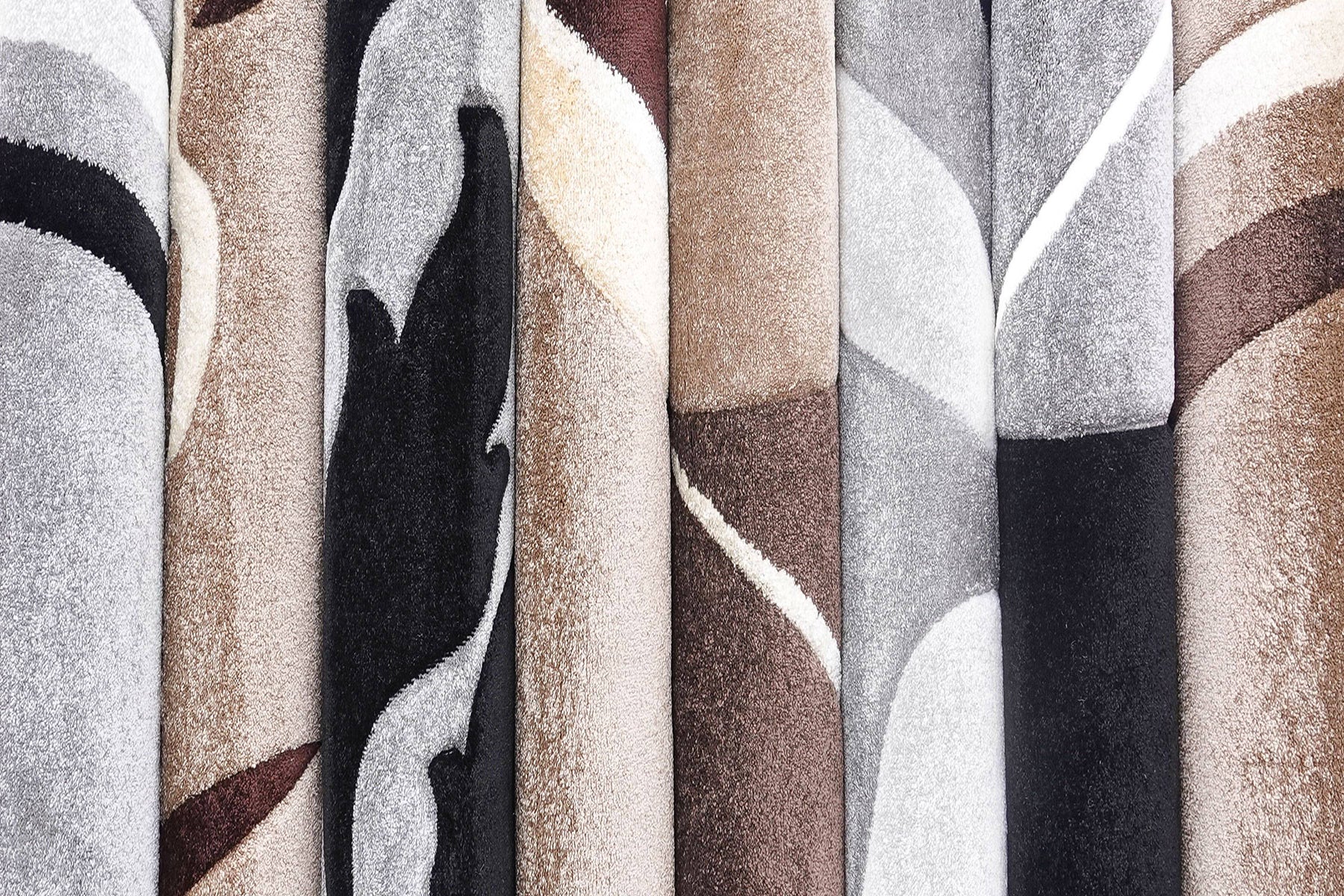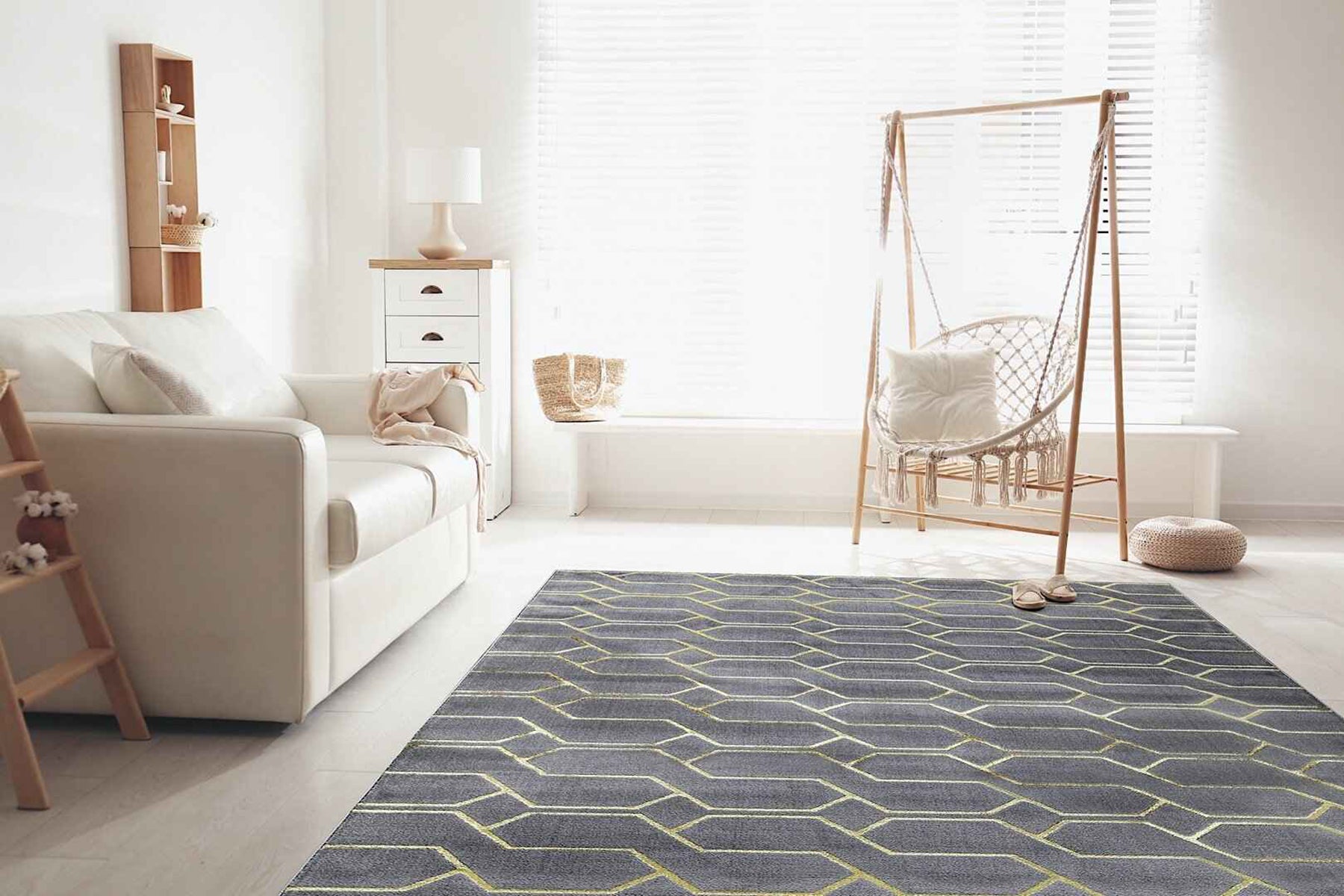
The History of Wool Rugs: A Journey Through Time
Early Beginnings (10,000 BC - 600 BC)
Imagine early humans in Europe way back around 10,000 BC shivering on cold cave floors. Their brilliant solution? Animal skins! This way, they took the first step towards keeping warm and comfy.
Neolithic Period (10,000 BC onwards)
Fast forward a few thousand years to the Neolithic period, roughly 10,000 BC onwards. People started settling down and farming instead of constantly moving around. This led to two big things for rugs: agriculture provided new materials like flax and wool, and someone (we don't know who, but a big thanks to them!) invented weaving, which turned those materials into fabrics. Around the same time, humans started raising animals, giving them a steady supply of wool – perfect for making warm and fuzzy stuff, like early rugs! Speaking of which, these shaggy rugs are the closest we will ever get to those fuzzy early rugs.
Early Rug Centres: The Cradle of Flat-woven Rugs (4,000 BC onwards)
Meanwhile, over in Mesopotamia (modern-day Middle East), archaeologists found evidence of super cool flat-woven rugs from around 4,000 years ago. Ancient Egypt seems to have been into flat-woven rugs too. These early rugs were mostly practical, keeping people warm and their floors covered. You might even see them pictured in pottery or paintings from those times.
Nomadic Rug Makers: Around 600 BC
Up north in the grassy plains of Europe and Asia, nomadic groups lived life on the move with their sheep herds. Wool wasn't just for clothes; they used it to make tents, portable shelters, and even early carpets. These weren't fancy works of art but a clever way to stay warm in those chilly environments.
Then, in 1949, BAM! Archaeologists in Siberia dug up a frozen tomb containing a well-preserved rug called the "Pazyryk" carpet. This carpet dates back to 600 BC and is the oldest known example of a complex knotted rug. The fact that it has such fancy knotting and rich colours suggests that rug-making in this region might have been a well-established tradition for a long time, even before 600 BC.
So, the story of early rugs is all about how clever people figured out ways to keep warm and comfy. From using animal skins to creating beautiful woven and knotted pieces, our ancestors laid the groundwork for this artistic and practical craft.

The Rise of Rug Art (600 BC - 1800s)
With the dawn of the first millennium BC, rug-making transitioned from a purely practical craft to an art form. This period saw a surge in the use of wool, particularly in Asia where vast sheep herds provided a readily available source of the material. Wool's natural beauty, durability, and ability to take dyes vibrantly made it the perfect medium for artistic expression.
Across Asia, distinct regional styles emerged. The Navajo people of the southwestern United States, for example, wove rugs with intricate geometric patterns and rich symbolism deeply connected to their culture and mythology. These rugs weren't just floor coverings; they were stories woven in wool, reflecting the history and beliefs of the Navajo people.
The Rise of Rug Art (600 BC - 1800s)
The development of trade routes like the Silk Road further fueled the rise of rug art. Skilled Middle Eastern rug makers, renowned for their intricate knotting techniques and vibrant colours, became central figures in this global network. Their rugs, often depicting stylized floral motifs and geometric patterns, became wanted luxury items for the wealthy elite throughout Eurasia. Much like the floral rugs and geometric rugs we have on offer today!
European traders, particularly those from Spain with strong ties to the Islamic world, brought these oriental rugs westward. Soon, European royalty and aristocracy developed a keen desire for these exquisite works of art. Palaces and grand homes were adorned with these rugs, not just for warmth but as powerful status symbols signifying wealth, refined taste, and cultural connection to the East. thus came into existence the traditional rugs of today.
Even though fancy knotted rugs became the most prized type, other rug-making methods never went out of style. Flat-woven rugs stayed popular in many places because they were practical and affordable. These flat rugs often had geometric designs and pictures reflecting the local art style, kind of like a signature for that area.
Oriental Rugs
Beautiful rugs, particularly those from Persia, became all the rage in Europe. Their intricate knotting techniques and dazzling colours captivated everyone. European weavers, eager to cash in on this trend, tried their hand at making their own versions. They aimed to replicate the intricate details and vibrant colours, but there were challenges. Labour costs in Europe were higher, and the quality of their wool wasn't quite as good as what was available in the East. As a result, while impressive, the European-made rugs often fell short of the originals.
The 19th century brought a shift towards mechanization. Power looms were invented in both Europe and America, allowing for mass production of rugs. These machine-made rugs were simpler in design, but their affordability opened the door for a wider audience to own a rug. However, there was a trade-off. While these rugs were cheaper, they lacked the intricate details and artistic value of hand-woven pieces, especially the magnificent Persian rugs. Despite the rise of mechanisation, the appreciation for hand-woven rugs persisted. People still valued them for their unique artistry, cultural significance, and the irreplaceable craftsmanship that went into each piece.

Europe Joins the Rug Making Scene (10th - 19th Centuries)
Around the 10th century, European homes were still rocking the cold, hard floor look. But a change was on the horizon, thanks to trade with Persia and the Middle East. Spain, with its close ties to the Islamic world, became the first European country to be dazzled by these luxurious rugs.
Spanish artisans were captivated by the intricate designs and craftsmanship of these imported beauties. Soon, workshops in cities like Alcaraz and Cuenca were buzzing with activity as skilled weavers took inspiration from Islamic styles and developed their own distinct flair. They used a combination of wool and silk to create stunning knotted pile rugs with vibrant colours and geometric patterns. Spanish rugs quickly became the must-have home accessory for European royalty and nobility, prized for their comfort and undeniable elegance.
The allure of Spanish rugs, and oriental rugs in general, sparked a desire to create similar pieces across Europe:
- France Gets Fancy: French weavers, particularly those in Aubusson, took a cue from Spain and the East. They incorporated floral motifs into their geometric designs and used finer wool, resulting in rugs renowned for their sophistication and elegance. Owning a French rug became a symbol of refined taste.
- England's Take on Rugs: While English weavers attempted to replicate oriental rugs, their efforts faced challenges. Higher labour costs and limitations in wool quality meant their rugs often lacked the intricate details of their Persian counterparts. However, English rugs offered a more affordable alternative, finding favour with the middle class.
Throughout this period, European weavers grappled with replicating the exquisite quality of oriental rugs, particularly those from Persia. While some focused on replicating existing designs, others experimented with new approaches. European weavers weren't just imitators. They made significant contributions to the art of rug making. New loom designs improved efficiency, and advancements in dyeing techniques broadened the colour palette.

By the 19th century, Europe and America witnessed a shift towards mechanised rug production. Power looms allowed for mass production of simpler rugs at lower costs. While these machine-made rugs brought affordability to a wider audience, they couldn't compete with the intricate detail and artistic value of hand-woven pieces.
Even though machines started making rugs faster and cheaper, people still loved the hand-woven kind, especially those made in Spain and France. These rugs were valued for their beautiful designs, the skill they took to make them, and the stories they told about the cultures that created them. Europe's jump into rug-making wasn't just a passing trend, it added a whole new layer of art to the continent and left behind a legacy of amazing craftsmanship and creativity.
Modern Developments: Machines, Tradition, and Innovation (1800s - Present)
The 19th century marked a turning point for rugs, with the rise of both mechanisation and enduring appreciation for hand-woven artistry.
The Machine Age and Mass Production (1800s)
The Industrial Revolution in the 19th century transformed many industries, including rug making. The invention of power looms revolutionised production. These mechanised looms could produce rugs much faster and at a lower cost than traditional hand-weaving techniques.
This shift led to the mass production of simpler rugs, making them accessible to a wider audience. The United States emerged as a major player in machine-made rug production, with companies like Bigelow Sanford Hathaway catering to the growing middle class with popular designs.
The Persistence of Hand-woven Rugs
Despite the rise of machine-made rugs, the appreciation for hand-woven pieces never faded.
Rug-making traditions continued to thrive in various regions around the world. These regions preserved their unique styles and techniques, incorporating local motifs and colours into their designs. For example, the Navajo people in the United States continued to weave rugs with deep cultural significance, using traditional techniques passed down through generations.
As appreciation for hand-woven rugs grew, rug collecting became a passion for some. Collectors sought out antique and vintage rugs, valuing their rarity, historical significance, and artistic expression.
New Materials and Techniques (20th Century - Present)
The 20th and 21st centuries witnessed further innovation in rug making:
Synthetic Fibres: The introduction of synthetic fibres like nylon and polyester offered new options for rug makers. These materials were often less expensive and easier to maintain than natural fibres like wool and silk.
New Designs and Blends: Rug makers began experimenting with new designs and blending natural and synthetic fibres. This resulted in a wider variety of rugs in terms of style, texture, and durability.
Sustainable Practices: Growing environmental concerns have led to an increased focus on sustainable practices in rug making. This emphasises using eco-friendly materials like recycled fibres and natural dyes.
The Future of Rugs (Present - Beyond)
The future of rugs looks bright, with a continued appreciation for both traditional and innovative designs. Rug makers will likely continue exploring new materials, techniques, and sustainable practices to cater to diverse tastes and needs. Whether hand-woven or machine-made, rugs will likely remain an essential element of interior design, adding warmth, comfort, and artistic expression to our living spaces.
